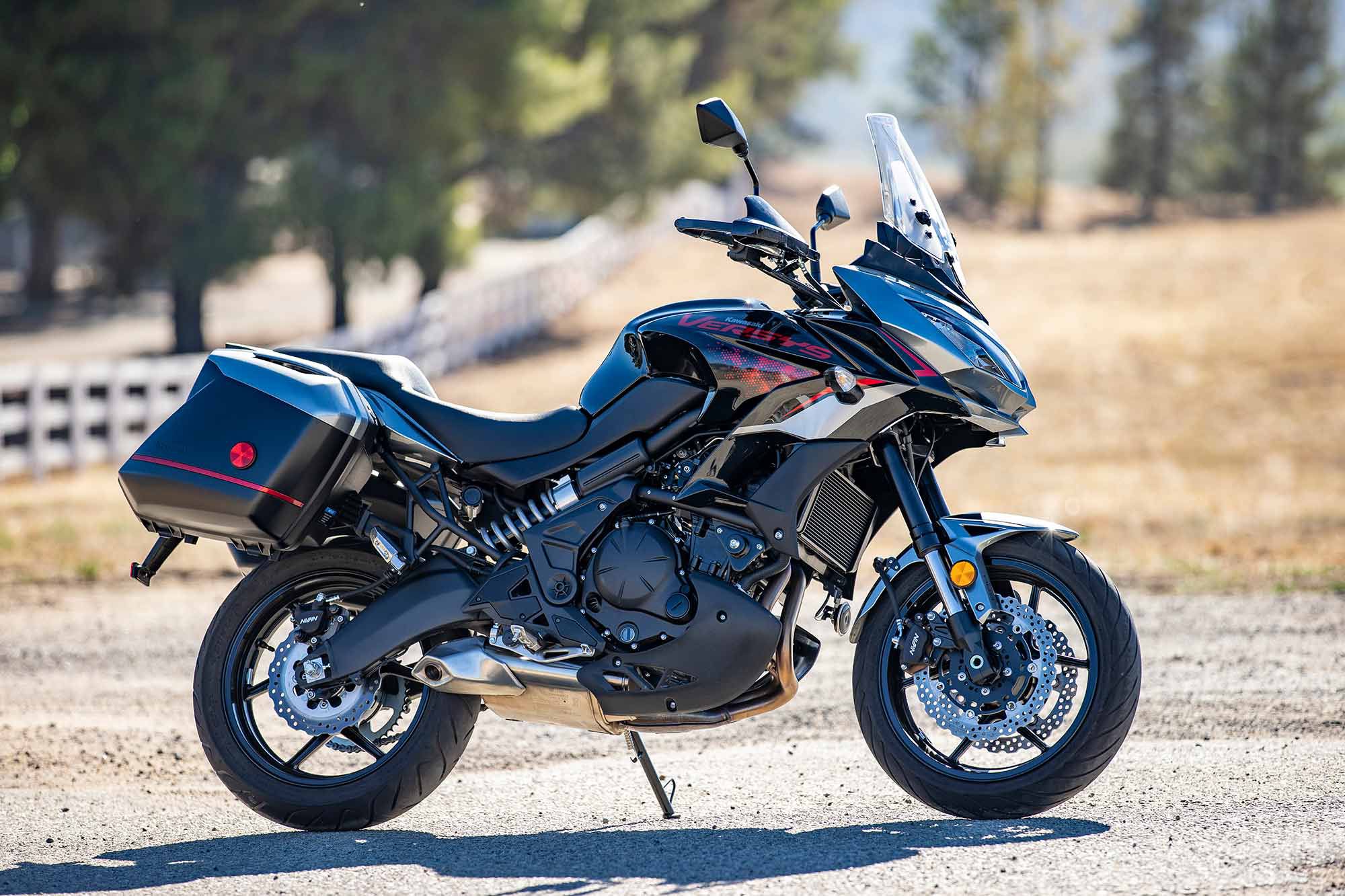
Ups
- Uber-tractable power delivery from the 649cc parallel-twin engine
- Well-balanced box-stock suspension settings with adjustability
Downs
- No significant changes since 2015 means the Versys has grown long in the tooth
- Clunky six-speed gearbox
- Abrupt on/off throttle response
Verdict
The Versys 650 is Team Green’s delivery of approachable and functional performance to the middleweight sport-touring segment, though a lack of recent updates shows its age.
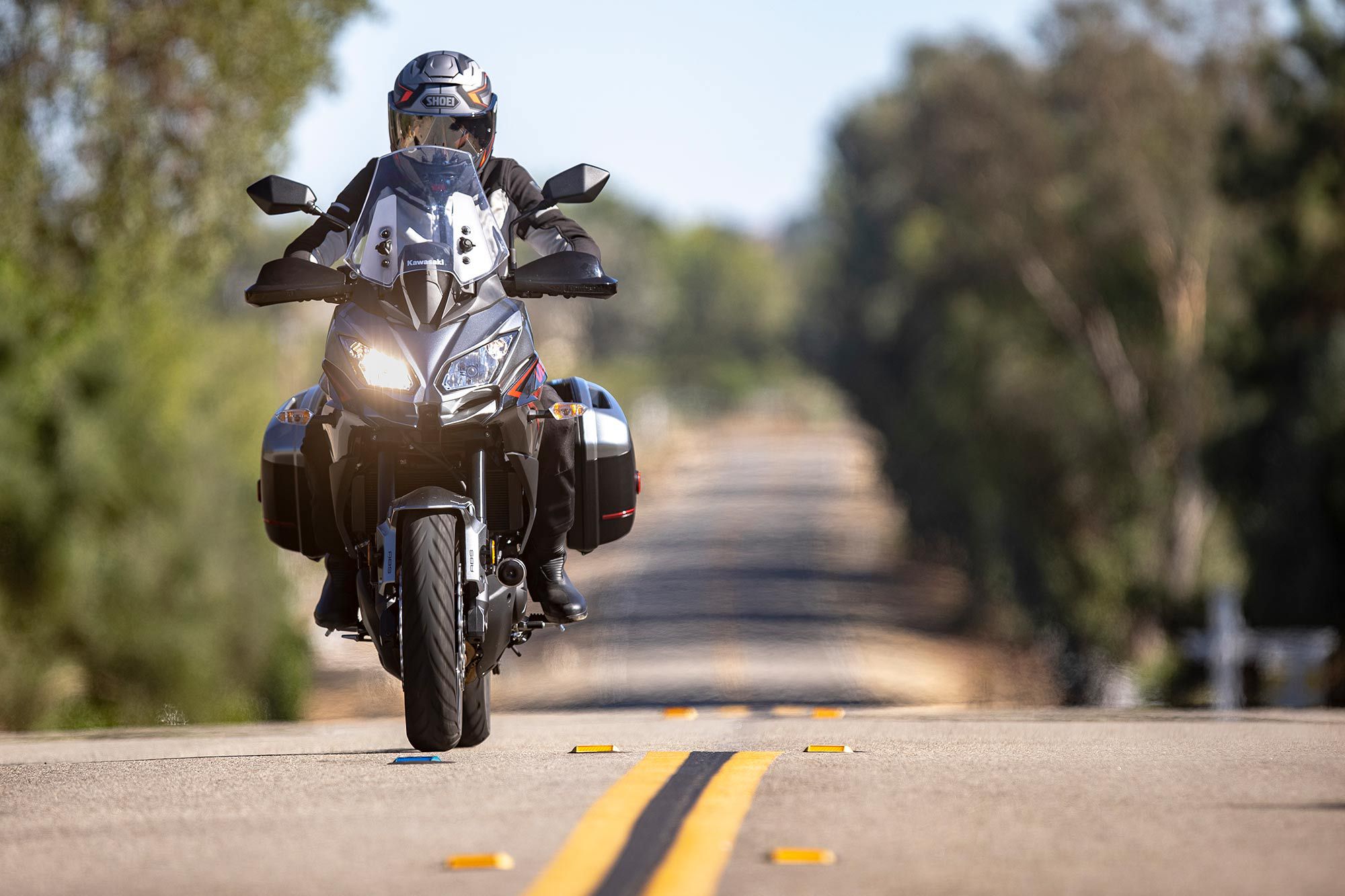
Overview
Originally introduced in 2009, the Versys 650 has been the middleweight staple of Kawasaki’s sport-touring lineup with approachable performance and user-friendliness. It’s powered by Team Green’s proven 649cc parallel-twin engine and paired with neutral handling, making it a motorcycle that riders of all skill levels can enjoy. And although it’s growing long in the tooth, it’s known for its simplicity and reliability.
Updates for 2021
There are no updates to the Versys 650 models for 2021.
Pricing and Variants
The 2021 Kawasaki Versys 650 ABS is available for $8,399. Team Green also offers the up-spec Versys LT for $9,299, which includes OE-equipped hand guards and 28-liter hard saddlebags for more functionality.
Competition
Main competitors of the Versys 650 include the Honda CB500X and Suzuki V-Strom 650.
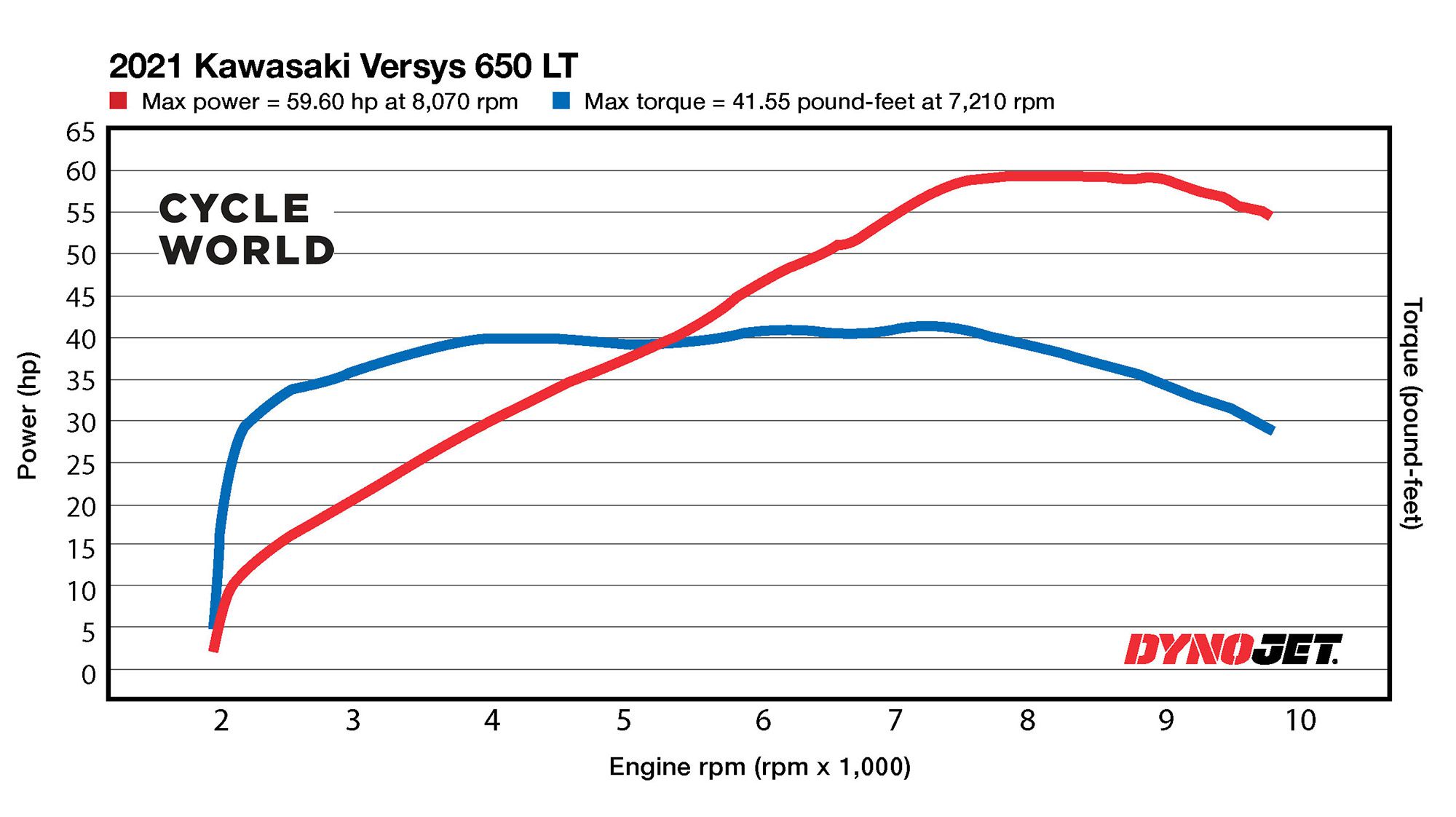
Powertrain: Engine, Transmission, and Performance
The Versys 650 is powered by Kawasaki’s proven 649cc parallel-twin engine, known for its approachability and user-friendliness. The powerplant last received updates in 2015 to the ECU mapping and exhaust system, but has remained unchanged since.
Placed on the Cycle World dyno, the Versys 650 produced a modest peak 59.60 hp at 8,070 rpm and 41.55 pound-feet of torque at 7,210 rpm. While it may not be the most impressive figures, take note of the tabletop-like torque curve beginning around 2,000 rpm and the ultralinear power delivery before tapering off toward redline. The combination makes for a tractable, friendly engine on the road.
In our first ride review of the 2021 Versys 650 LT, we also noted, “The Versys is fantastically fun for spurts between lights, commuting on freeways, or rambling around on winding pavement. This engine can really stretch across third, fourth, and fifth gears; sixth is only rarely needed on the freeways.”
But that’s not without shortcomings. The six-speed gearbox is clunky and requires significant effort to shift, and the on/off throttle response is abrupt, which can be annoying at low speeds.
Handling
The Kawasaki Versys 650 is known for its well-balanced, neutral handling. Measured at 500 pounds fully fueled on the Cycle World scales, the Versys LT is known to be slightly top-heavy at low speeds, but holds great composure on the open roads. The telescopic fork is adjustable for preload and rebound damping, while the shock sees only preload adjustability. Still, we found dialed-in box-stock settings glide over pavement of all conditions in our testing.
Brakes
The Versys is brought to a halt by a pair of two-piston Nissin axial-mounted calipers clamping to 300mm discs up front and a single one-piston Nissin caliper and 250mm disc out back. Stopping power is adequate, but feel at the front lever could be improved for better understanding of applied brake pressure.
ABS comes standard on both models.
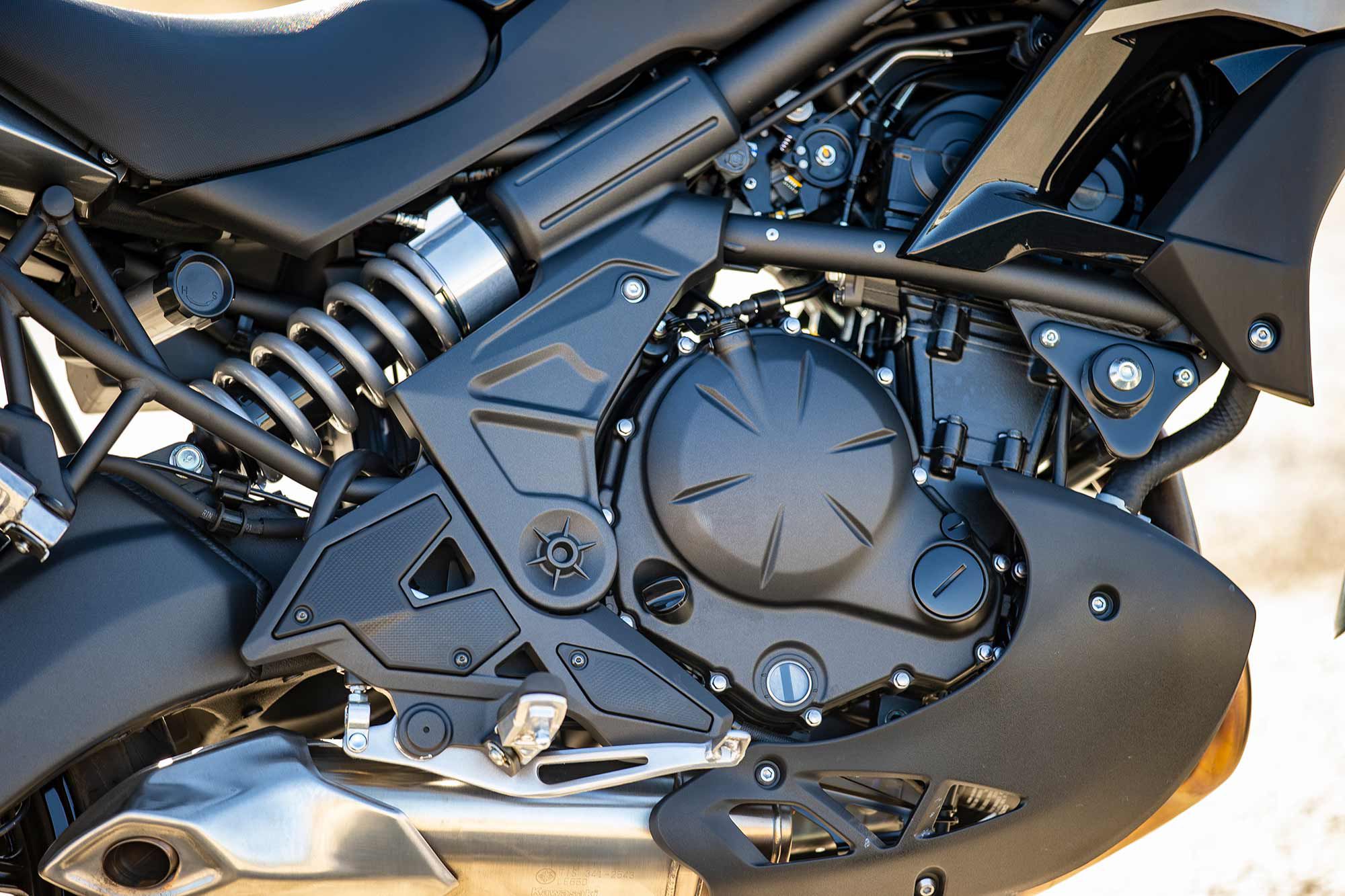
Fuel Economy and Real-World MPG
Cycle World recorded an average of 42.5 mpg during testing. Pair that with the relatively large 5.5-gallon fuel tank, and trips of more than 200 miles are reasonable.
Ergonomics: Comfort and Utility
A wide, one-piece motocross-style handlebar offers great lever for an in-command riding position aboard the Versys. The seat is supportive and narrow between the legs, which lends itself to a more approachable feel of the CW-measured 33.2-inch seat height.
The windscreen is adjustable and offers great protection in its highest setting. The LT’s hand guards also provide some protection against the open air.
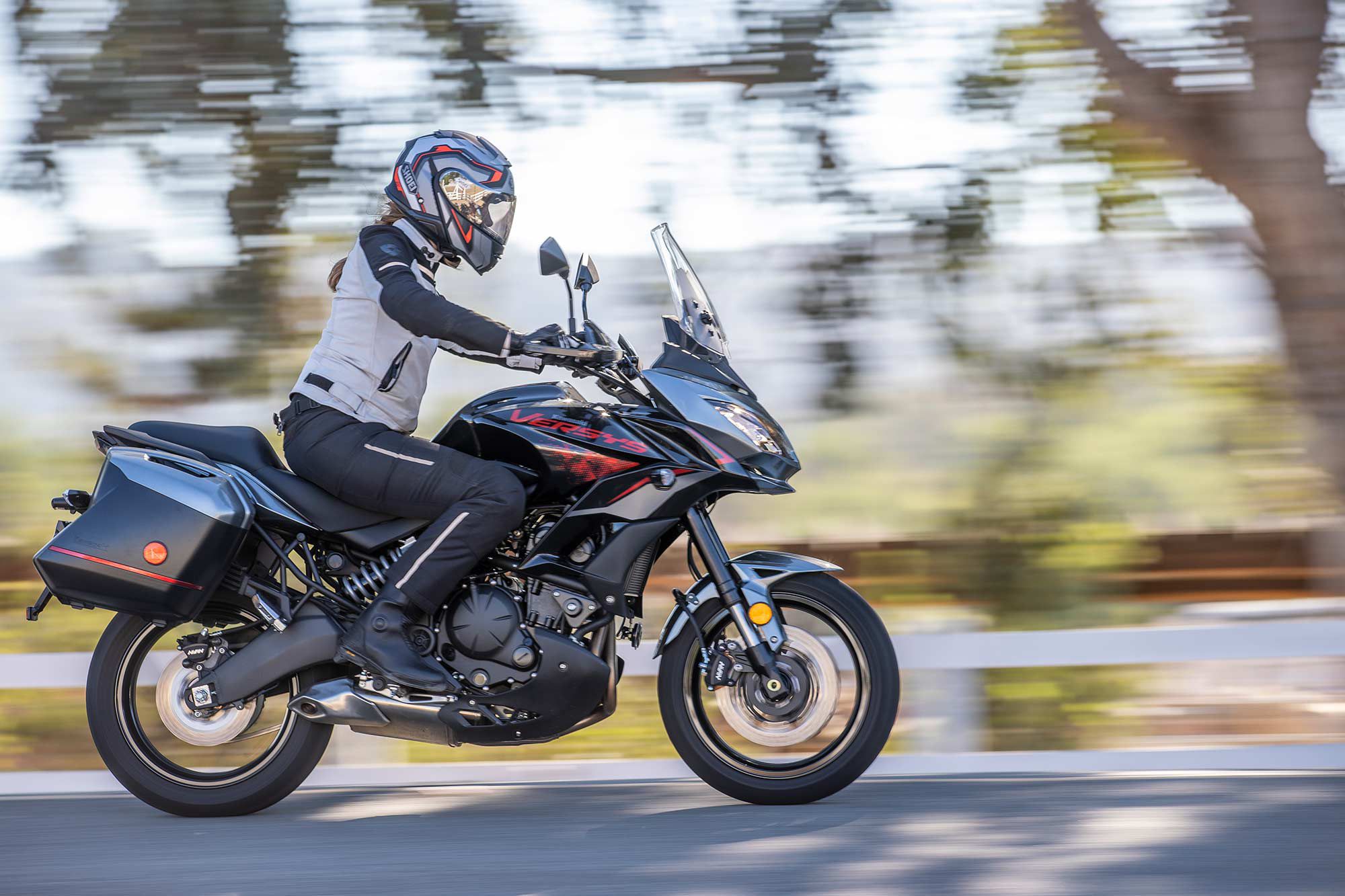
Electronics
The 2021 Kawasaki Versys 650 lacks any sort of electronic rider-aid package, hold for the standard ABS system. It’s unsurprising considering the 2009 launch date of the model and only various updates incorporated to the 2015 machine, but it does lack compared to other modern-day competition.
Likewise, halogen lighting and an LCD/analog tachometer also feel outdated, but updates will surely drive up costs.
Warranty and Maintenance Coverage
The 2021 Kawasaki Versys 650 is covered by a 24-month, limited warranty. Additional coverage can be purchased via Kawasaki Protection Plus.
Quality
The Versys 650′s quality falls a step behind in terms of 2021 standards. The fitted equipment and overall build reflects the fact that the last significant update was made in 2015.
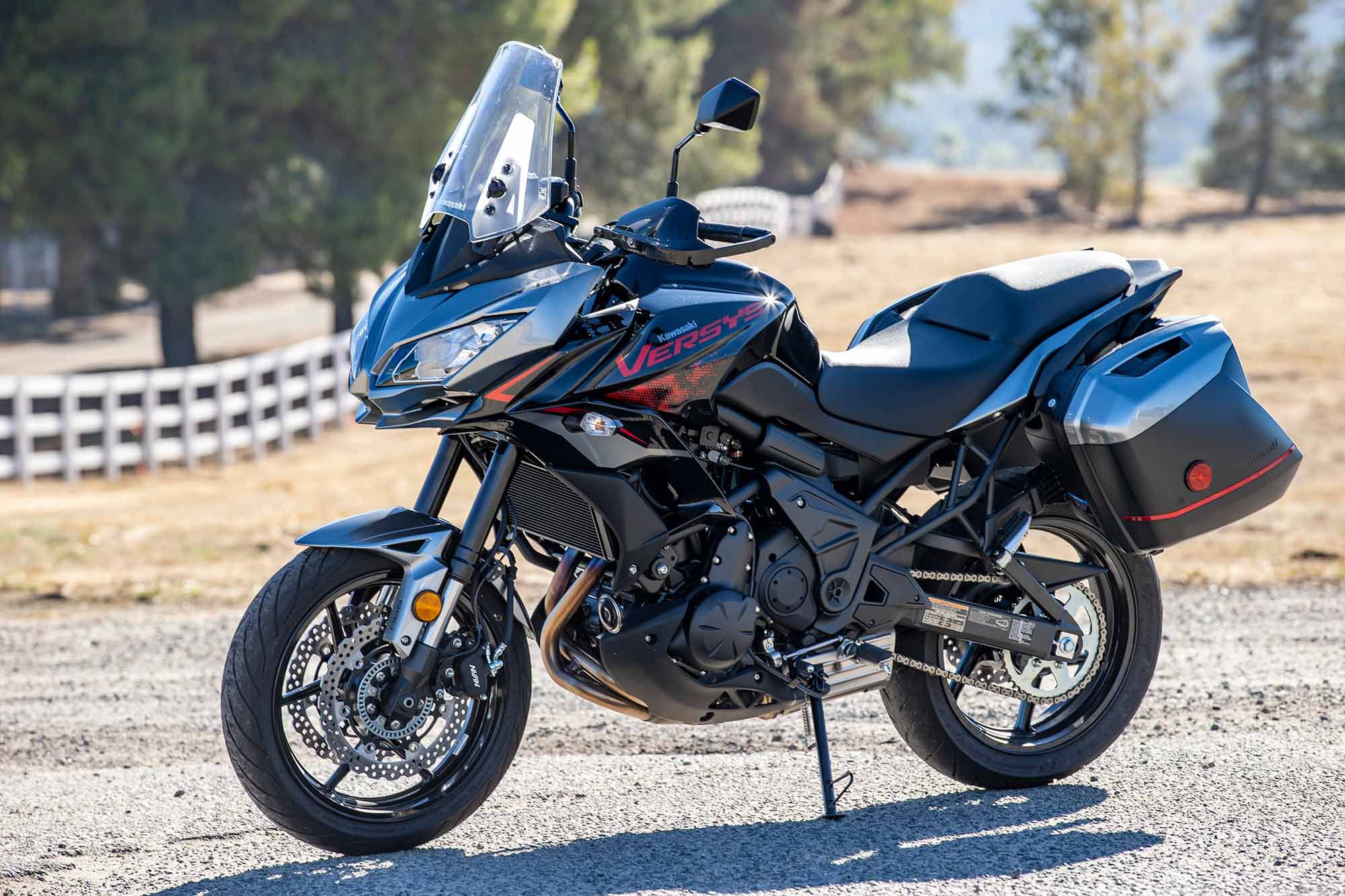
2021 Kawasaki Versys 650 ABS/Versys 650 LT Claimed Specifications
| MSRP: | $8,399/$9,299 (LT) |
| Engine: | 649cc, DOHC, liquid-cooled parallel twin; 4 valves/cyl. |
| Bore x Stroke: | 83.0 x 60.0mm |
| Transmission/Final Drive: | 6-speed/chain |
| Fuel Delivery: | DFI w/ Keihin 38mm throttle bodies (2) |
| Clutch: | Wet, multiplate |
| Frame: | Double-pipe perimeter frame |
| Front Suspension: | 41mm hydraulic telescopic fork, rebound and preload adjustable; 5.9 in. travel |
| Rear Suspension: | Single shock, preload adjustable; 5.7 in. travel |
| Front Brake: | Nissin 2-piston calipers w/ dual 300mm petal disc w/ ABS |
| Rear Brake: | Nissin 1-piston caliper w/ single 250mm petal disc w/ ABS |
| Tires, Front/Rear: | 120/70-17 / 160/60-17 |
| Rake/Trail: | 25.0°/4.3 in. |
| Wheelbase: | 55.7 in. |
| Ground Clearance: | 6.7 in. |
| Seat Height: | 33.1 in. |
| Fuel Capacity: | 5.5 gal. |
| Wet Weight: | 476 lb./496 lb. (LT) |
| Contact: | kawasaki.com |
Cycle World Tested Specifications
| Seat Height: | 33.2 in. |
| Wet Weight: | 500 lb. (LT) |
| Rear-Wheel Horsepower: | 59.60 hp @ 8,070 rpm |
| Rear-Wheel Torque: | 41.55 lb.-ft. @ 7,210 |
Source: MotorCyclistOnline.com
